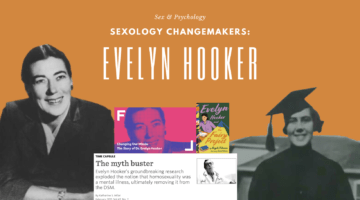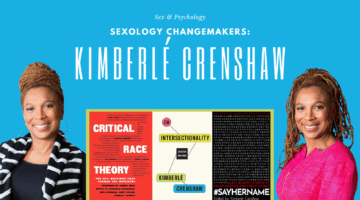What Is It Like To Publish In An Open-Access Journal?
February 19, 2014 by Justin Lehmiller

In my previous post, I talked about why I no longer want to be a part of the traditional academic publication system: the acceptance criteria are entirely too subjective, the process takes years, and scientists are forced to sign over their copyright to a greedy industry that gouges anyone who wants to access our work. As a result, I have started publishing in open-access journals. I have many scientific colleagues who have never published in such journals and are quite curious about the process, so allow me to tell you about my recent experience publishing a paper in the journal PLOS ONE entitled Social Networking Smartphone Applications and Sexual Health Outcomes among Men Who Have Sex With Men.
As a backdrop, let me first say that there was a time in the not-too-distant past where I was skeptical of PLOS ONE and other open-access journals by sheer virtue of the fact that they assess publication fees to the authors. I was concerned that acceptance might be contingent on payment of a fee, which would undermine the integrity of the process. So, I approached this journal with the mindset that if there was anything fishy about it or the journal only seemed like it was after money, I would pull out immediately. Fortunately, I did not get that impression at all. In fact, there was no mention of money until after my paper was accepted for publication, but more on that later.
So let’s start at the beginning. I initially submitted this paper to a very respectable print journal where it was rejected. There had been two reviewers, both of whom expressed concern about the same thing: my study’s comparison of men who hook-up through smartphone apps with men who find sexual partners in other ways yielded “too many” null results. We had predicted that app users would report engaging in risker sexual behavior than non-users and, further, that this difference would be a function of app users having personality profiles that predispose them to greater risk-taking (e.g., we thought that perhaps app users might be more likely to be sensation seekers). Although we found that app users indeed reported having more sexual partners and a higher rate of STIs, there were no differences in personality between users and non-users, which surprised us, but was informative in its own right (you can read a summary of the findings here if you want to learn more).
I found Reviewer 1’s comments about the paper to be particularly disturbing:
“My first concern is the modest findings that were reported. Most of the variables the authors seem interested in (specifically, the personality variables) did not produce significant results as a function of smartphone use. Even if the predicted results had turned out, it would be possible to ask, ‘How important or counter-intuitive are these findings?’”
Did you ever wonder why most academic journals only seem to publish papers in which every hypothesis is supported and all of the findings are statistically significant? Well, now you know why. Many reviewers and editors *require* that all of the results are significant before they agree to accept a paper. But it’s not just that your findings need to be statistically significant—they all need to be counter-intuitive too! This is an attitude I’ve encountered all too often at “top-tier” journals, and all I can say is that it’s just not the hallmark of good science because it creates a major bias in the research that is published.
After this experience, I decided to try something different. Despite what the reviewers at the first journal said, my co-author and I felt that we had an important and timely paper on my hands because use of smartphone hook-up apps has dramatically increased in recent years, and there’s very little research on them and how they’re linked to sexual health. Rather than see this paper languish, I submitted it to the open-access journal PLOS ONE because that journal’s mission is to take the inherent subjectivity out of the review process. Their goal is to publish sound science without respect to how “counter-intuitive” or “interesting” the findings are. I sent the paper to them on August 7, 2013 and found that the submission process was really no different than that of any other journal, except that PLOS has some unique formatting requirements (they don’t do APA Style, which didn’t really both me because I’ve never been a fan of APA Style and its endless list of arbitrary rules anyway).
I received a decision less than two months later on September 30. The paper had been reviewed by an editor and three outside experts, all of whom provided extensive comments. To my great surprise, it was perhaps the most helpful set of comments I have ever received on a manuscript! Rather than musing about whether the findings were “important or counter-intuitive” enough to publish or lamenting some of the null results, the comments were actually aimed at improving the reporting of the science. For example, the reviewers suggested other ways of analyzing and describing some of the findings that might be clearer and more informative, and they made a number of suggestions about enhancing precision of language, among other things. The suggestions were not only constructive, but addressing them really did improve the quality of the manuscript. Overall, the review process felt no less rigorous than other journals, and the revision was not necessarily any easier than others I have worked on (in fact, I still ended up submitting an 8-page, single-spaced letter responding to the reviews)—however, it was a much more pleasant experience and I didn’t want to hurt myself afterward.
I submitted my revision on November 11 and received a decision one week later (November 18). The editor did not send it out for another round of peer review, but asked that I submit a second revision addressing a few minor issues. This revision was submitted December 4, and I received a formal acceptance on December 13. I then worked with the production staff to format the paper correctly and it appeared online on January 23, 2014. All in all, it took 5.5 months from the time the article was submitted until it was officially published. I have had experiences at other journals where it took that long just to get an initial decision! Needless to say, in addition to the quality of the reviews, I was pleased with the speed and efficiency of the process. On a side note, I also appreciate how PLOS includes the name of the handling editor on all published papers, something most print journals don’t do. This transparency helps to reduce conflicts of interest and gives readers confidence that the research has been thoroughly vetted.
So what about that publication fee? After my paper was accepted, I was sent an invoice for $1350. Yes, I know that’s a lot of money–especially for people who work in academics. But before I go on, I should mention that the PLOS website clarifies that it is a non-profit organization and that all fees are used to pay for production, archiving, and hosting of articles. Fees are based on the authors’ country of origin, and fees are reduced or waived for scientists in developing and low-income countries. Also, regardless of country, if the author does not have access to funds to pay for the fee, waivers and fee reductions can be requested.
Because my paper was not the product o
f grant-funded research, I did not have funds lined up to pay the fee. Also, my own personal budget doesn’t allow for thousands of dollars per year in publication fees. However, I did some searching and discovered that my university wants to encourage faculty to publish in open access journals, so it has a program lined up where you can apply for funding to assist with publication costs (in fact, several universities have done this in recent years and you can find a complete list of them here). I was fortunate to receive a grant to cover half of the fee ($675). To clarify, the only reason my university did not cover the whole fee is because my co-author was affiliated with a different institution. Because that other institution has not yet signed on to the Compact for Open-Access Publishing Equity, we were unable to secure the other half of the fee. I then approached PLOS and said that we could only pay $675, which they accepted without question. So, in the end, it didn’t cost me anything, and PLOS stuck by their fee waiver/reduction policy.
Don’t get me wrong–my reason for disclosing these payment details is simply to illustrate that PLOS lives up to its word and that final publication is not contingent upon paying a set amount of money. This should not be taken to mean that I think I everyone should run over to PLOS and submit a ton of articles under the impression that the fees are optional or unnecessary. It is important to recognize that open-access journals cannot make our research available to all at no cost to anyone. It costs money to run these journals and to commit to archiving our research in perpetuity. Consequently, it is perfectly reasonable for open-access journals to charge something. In the long run, I expect that these fees will largely be shouldered by universities because once enough researchers make the move to open access, libraries will be able to reduce their dependence on the traditional print journals that charge exorbitant subscription fees and transfer the savings over to support for open access. In the meantime, however, scientists should do their best to find ways to pay all or at least some of the fees if open access is to survive. I should also note that other open-access options exist where the fees are lower than PLOS, so if funding is tight, you might explore these other options.
One final thing worth mentioning about my experience with PLOS is that in less than one month since publication, my article has been viewed nearly 750 times. It is difficult to make a direct comparison with the traditional print journals in this regard because such statistics generally are not made available at most of them (perhaps because we would be disheartened to see just how few people read the average article when it is put behind a paywall); however, I am pleased to know that my work is out there and available for anyone to access, and hundreds of people have checked it out already. And not only that, but I retain the copyright to my paper and I can share it with whoever I want whenever I want. And if someone wanted to republish one of my tables or figures in a textbook or on a website, they could do so without seeking permission or paying a licensing fee. The knowledge is out there and free to be shared. How great is that?
I would not hesitate to send another paper to PLOS, and I am currently exploring open-access options for my latest research projects. I hope that my experience encourages you to consider open-access journals for your work in the future because I firmly believe that the traditional publication route impedes scientific progress and the time has come to change paths.
Want to learn more about The Psychology of Human Sexuality? Click here for previous articles or follow the blog on Facebook (facebook.com/psychologyofsex), Twitter (@JustinLehmiller), or Reddit (reddit.com/r/psychologyofsex) to receive updates.
Image Source: 123RF.com
You Might Also Like:

Dr. Justin Lehmiller
Founder & Owner of Sex and PsychologyDr. Justin Lehmiller is a social psychologist and Research Fellow at The Kinsey Institute. He runs the Sex and Psychology blog and podcast and is author of the popular book Tell Me What You Want. Dr. Lehmiller is an award-winning educator, and a prolific researcher who has published more than 50 academic works.
Read full bio >

